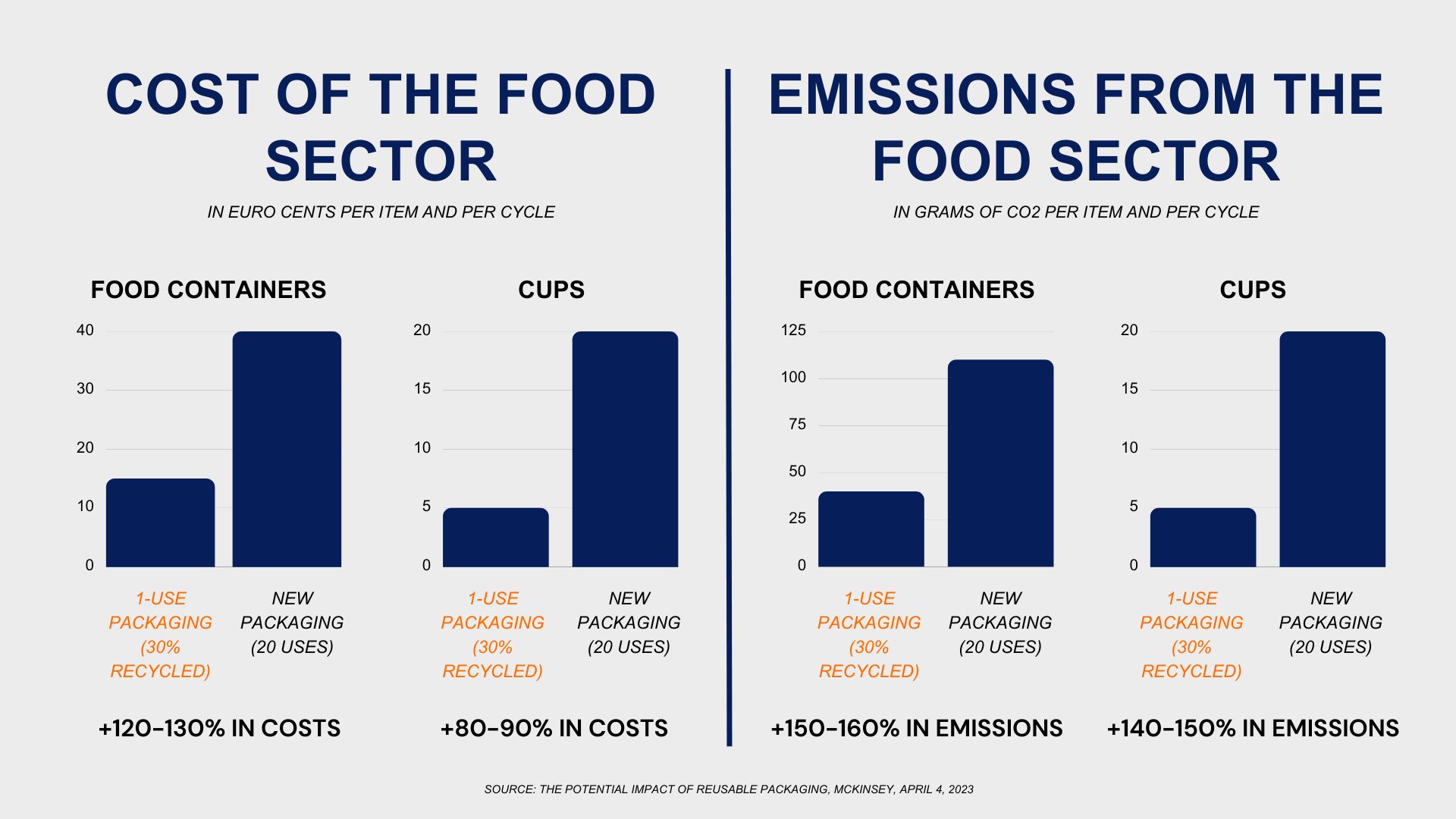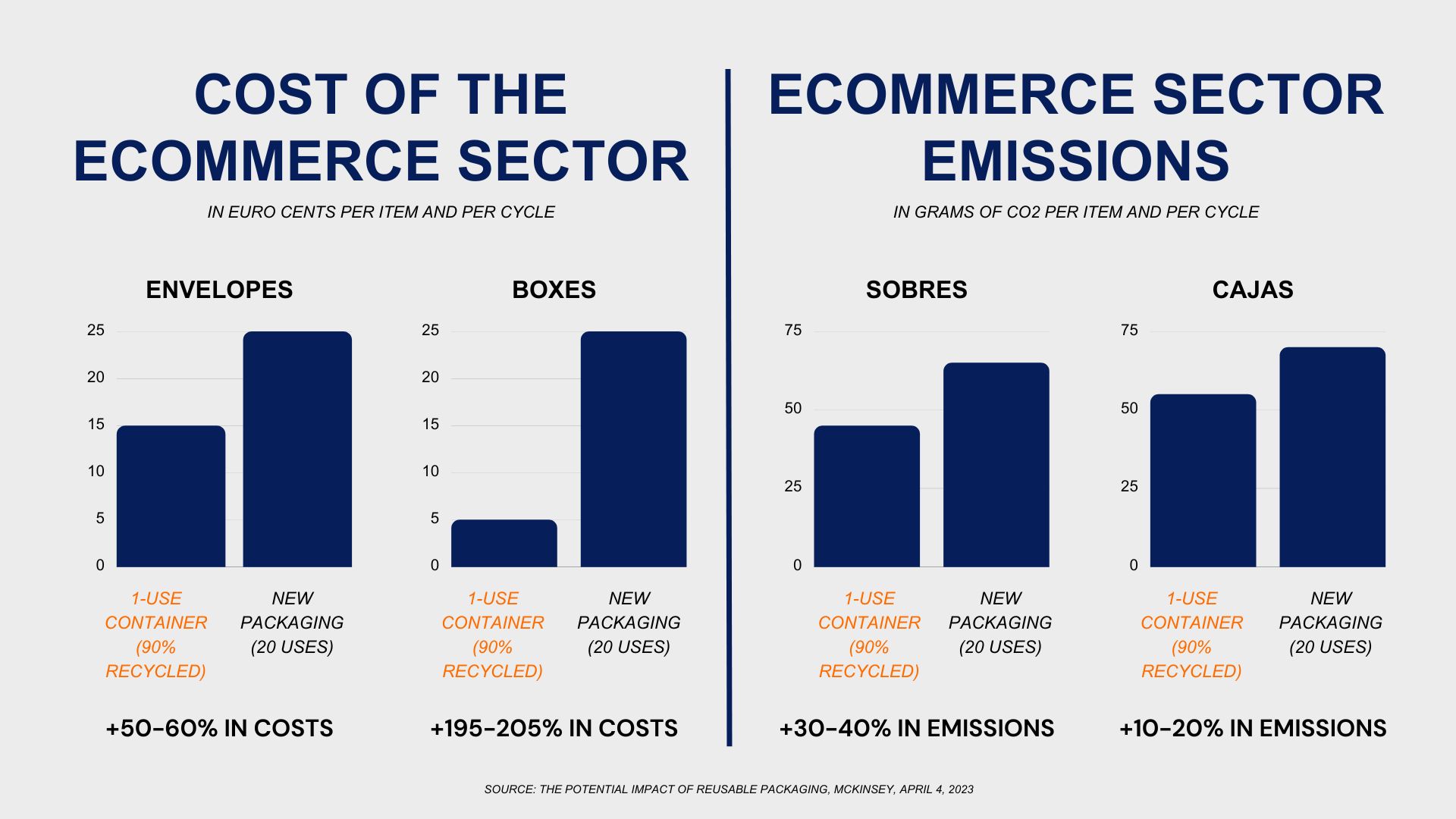The European Union has a clear objective: to reduce its carbon footprint as much as possible by 2030. To this end, it has been creating policies and regulations for several years that favor the environment and limit pollution from the different sectors that make it up. The PPWR is one of these proposals that is part of this "Green Deal".
In this article we explain what it is, what studies exist regarding this proposal and what to consider for the coming years, if it is approved.
What is the PPWR?
PPWR stands for Packaging and Packaging Waste Regulation. It is the proposal for the Packaging and Packaging Waste Regulation that the European Union intends to apply. At the moment it does not have an implementation date, but it does have a voting date: October 2, 2023. It should be recalled that the proposal was formally presented to the European Parliament on November 30, 2022.
The main objectives of this proposal are:
-
Harmonize regulations in the EU to promote the circular economy.
-
Reduce waste.
-
Improve recycling.
It also addresses the growing environmental concerns caused by excessive packaging and low recycling rates. It aligns with the European Green Pact and other EU environmental and trade policies.
The Directorate-General for the Environment, the author of the proposal, points out that packaging represents one of the largest consumers of virgin materials in the EU. Approximately 40% of the plastics and 50% of the paper used in the EU is used for packaging. This draft regulation pursues the desire that all packaging should be reusable or recyclable in an economically viable way by 2030.
The drawbacks of PPWR
A new study carried out by CEPI (European association representing the paper industry) and other associations such as ECMA, EPPA, FEFCO or Pro Carton have managed to shed important data that change the way of seeing this proposal so far.
To carry out this research, two case studies have been considered:
-
One on the analysis of the impact on the change of packaging to the home-delivery food sector in Belgium..
-
The other is based on e-commerce sales in Germany.
This report analyzes the impact that the alternatives proposed by PPWR will have in 2030 against the packaging used today in each industry. The overall conclusions of the study were 4:
1. Reusable solutions produce higher CO2 emissions.
2. The new solutions proposed imply a higher cost for the manufacturer and, therefore, for the consumer.
3. Transportation is the main cause of emissions and increased costs.
4. The reusable options are made from fossil fuels.
Belgium case: The reality of packaging change in food delivery
The adoption of these new reusable systems in the "Take Away" sector would lead to a cost increase of between 80 and 130%, because alternative packaging would increase transportation and cleaning costs, which would end up being paid by consumers..
In addition, challenges include integrating these systems into employees' daily operations and educating consumers on their proper use. Finally, storage and cleaning of packaging would be required, which would increase water and energy consumption by adding 140-160% additional emissions. These would be the percentages if the change were to take place:

Obligations for final distributors in the food sector by 2030
Final distributors of hot and cold beverages should ensure that, by January 1, 2030, 20% of their packaging is made of reusable material. By 2040, this should be 80%.
Meanwhile prepared food distributors would be obliged to ensure that, by the same dates, their reusable packaging would be 20% by 2030 and 40% by 2040.
If you like this kind of articles you can find similar content for free in our newsletter!
Germany case: Significant CO2 and cost increases in e-commerce
For e-commerce in Germany, the adoption of reusable packaging would increase CO2 emissions by 10-40% and costs by 50-200%. High transportation and logistics costs, together with the need for additional infrastructure, are the main factors contributing to the increased environmental and economic footprint.
Implementing reusable solutions in e-commerce would require significant investments in infrastructure and logistics capacity. There are challenges such as the first investment to create these materials, additional IT costs, infrastructure, and training, these have not even been assessed for this study due to the large impact it would have had on the data.
The costs and emissions that could be associated with this proposal could be summarized as follows:

Obligations of operators from 2030 onwards.
Si la PPWR se llevase a cabo, los operadores de comercio electrónico que repartan productos no alimenticios deberían asegurarse de que el 1 de enero de 2030 el 10% de sus envases fueran reutilizables. Una vez llegados a 2040, estarían obligados a que mínimo, la mitad de estos envases, pudieran ser reutilizados al menos 20 veces después de su primer uso.
Other studies (ARA and Mark UP Fruit and Vegetables 2012)
A report by ARA (Altstoff Recycling Austria) states that, although the manufacture of plastic packaging results in higher CO2 emissions (70g CO2/kg fruit), its positive impact on reducing food waste is considerably higher, as it avoids the emission of 350g CO2/kg fruit.
Furthermore, eliminating the packaging will not only lead to more food waste as many believe, but will also affect the perception of the product, as it will lose its distinctive branding and the country-of-origin reference will be lost. The study "Mark Up Fruit and Vegetables 2012" prepared by INCPEN (Industry Council for Packaging and the Environment) supports this idea, showing that only 8% of the energy used in the value chain, to supply fresh fruit to a person for a week, corresponds to the primary packaging.
How to code packaging cleanly?
Whether this proposal in the European Parliament is approved or not, the best solution to avoid emitting more pollution in the production chain is to get a clean and sustainable labeling, coding and marking solution.
All coding solutions presented by UBS use renewable energies for their manufacturing process. In addition, our equipment achieves energy savings in labeling processes compared to other manual solutions, consumes less ink than other equipment on the market and can print on boxes, thus avoiding the use of labels or paper in the process of identifying goods or products.
Are you interested in incorporating sustainable coding equipment in your production line?

